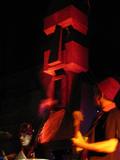^^^^
Very nice improvement. All this in the last couple of days has caused me to rethink what I have done. It will be redo city in the future. ![]() Thanks to all who contribute to this.
Thanks to all who contribute to this. ![]()
dp:
dude
346 days ago
Bango_Rilla:
Shout Bananas!!
301 days ago
BillyBlastOff:
See you kiddies at the Convention!
285 days ago
GDW:
showman
236 days ago
Emilien03:
https://losg...
158 days ago
Pyronauts:
Happy Tanks-Kicking!!!
151 days ago
glennmagi:
CLAM SHACK guitar
137 days ago
Hothorseraddish:
surf music is amazing
117 days ago
dp:
get reverberated!
67 days ago
Clint:
“A Day at the Beach” podcast #237 is TWO HOURS of NEW surf music releases. https://link...
12 hours ago
No polls at this time. Check out our past polls.
No contests at this time. Check out our past contests.
- 1st – Bombora, FekeFez, grackle, juliomoreno, mrbassman1950, pauliweasel, ProfessorLongboard, RogueChiefster, stevel
- 2nd – FritzCat, Marcin
- 3rd – GypsyJay, Rubberboy
- 4th – smid, Sunny_Jake
- 5th – bbigmusic, dirtgrub, GS4, johnmcillan61, killbabykill34, Shakey64, themonsterwave
- 6th – BenVoiles, bobwalk, DavidMcCoy, Emilien03, Jaque_Kilauea, Manic_Presley, segler
- 7th – Clint, johnmares, togergo
- 8th – 303vegas, Tiki
- 9th – chicklang, Emguitars, holdenfan101, mrmomo, ToneMonkey, Unca_Stu
- 10th – CARLOSVENTURES, catguy, nightsurfer, PreBeatles, the_eyeberries, vintagesurfdude
- 11th – schrademo
- 12th – dlhogge60, EvilDeadTux, fredder120, jp, RonC57
- 13th – Grimnir, ifallalot
- 14th – JimiDW
- 15th – cricketseed, davis, nickwass, thetwilightsurfers, Thompar
- 16th – ChrisPlatt, miked416, Skizz
- 17th – BMo2xl, jjudas, Taj, Trace
- 18th – Bobc1956, herreisenmax, Yelo
- 19th – Chris_Vierge, MonsterMash, speacial_agent_Conrad_Uno, tonewoods
- 20th – halibutrick
- 21st – Craigthekeg, fattkatt, SurfinUsa2007, Swamp_Surfer
- 22nd – bandita, donbarroso, LHR, Norman, purpletornado, RazorReverb
- 23rd – apolloben, AstroSurf, BigTim, Schwenman, worldmartini
- 24th – CrashHardtop, El_Guerrero, Irion_Fin, Iron_Fin, Plan9Band, Pokerstar, xray1960
- 25th – Alstikis, Baxter, cowabungasurf, McLefty83
- 26th – Jason
- 27th – ActionJosh, Ayatho, Dstreeter, MahdaHairy
- 28th – BigWaveRider69, CaptainThunder, drumuitar, VernJules101
- 29th – brerbo, chuckhughes2, DNUTH17, ElPato, HockeyPuck, Mr_Reverb63, petebiltoft, Samurai, sysmalakian, tenniseme, tom_k1tl
- 30th – Cranky, elpacifico, Mariop, robl, SurferJoe46, TheTommyGuns

SurfGuitar101 Forums » Gear »
 The Surfy Bear Fet Reverb
The Surfy Bear Fet Reverb
|
Joined: Dec 11, 2011 Posts: 2136 


|
|
|
Joined: Jul 24, 2012 Posts: 2762 Finknabad, Squinkistan 



|
Sonichris wrote:
Thanks Chris for the pointer. It's also for sale for $8 on Amazon. |
|
Joined: Feb 13, 2007 Posts: 134 NW Fla Gulf Coast 

|
JObeast - your AC cord would connect to the three terminal posts on the left-hand side marked L (Line Hot), N (Neutral) and ground. |
|
Joined: Jul 23, 2014 Posts: 645 LA -ish 





|
THANK YOU FOR THIS VID!
mj
|
|
Joined: Feb 13, 2007 Posts: 134 NW Fla Gulf Coast 

|
I want to clarify the PS in the video is not the same one used for the Surfy Bear. The wiring is the same but the output is different. I didn't make the video, I just found it! |
|
Joined: Jun 28, 2017 Posts: 162 |
I think someone here with the correct knowledge/training/experience should explain very clearly how dangerous it is (as in: you die) to connect 120 or 220V to a device which, from the many examples seen here, will go inside a metal (tool)box. And also point out all the precautions that have to be taken as far as wiring goes, to not die when one of those 220V carrying wires come loose (they can and probably will!) and come in contact with the inside of the metal toolbox. This is not your typical 9V DC connected to a aluminium distortion stompbox. Just saying to be careful and to know what you're doing when dealing with mains inside a metal box which you'll touch and which will possibly be connected to your guitar. To me this just looks like a lethal accident waiting to happen. I understand 8$ is tempting but still... Last edited: Feb 01, 2018 10:45:21 |
|
Joined: May 04, 2014 Posts: 734 


|
j_flanders wrote:
A good point. Maybe we should set some rules to safely install these power supplies. I'll think about it and come back to you guys as soon as possible. |
|
Joined: Mar 11, 2011 Posts: 819 Semass 
|
A drop of blue loctite we’ll help, as would using a tie wrap to add some strain relief to the wire. Edit: I should add that in the video, the dude put bare wire into that terminal strip. In some strips that’s ok. Others are designed for ring/spade terminals. I’ll see which one comes on the version that Chris linked when it gets here. Last edited: Feb 01, 2018 06:04:12 |
|
Joined: Jul 24, 2012 Posts: 2762 Finknabad, Squinkistan 



|
Gilette wrote:
Safety points well taken! I have a 120 v AC mains line (intact on both ends) plugged into a 3-prong jack set into a small toolbox, where several wallwarts afre glued into place using polyurethane cement. Their various low-volt outputs feed jacks on the front panel, where light cords plug in to power my devices. The mains power on the inside of the input jack goes through heavy gauge high voltage-rated wires with high-temp insulation soldered directly onto the paddles of the wallwarts, all covered in heatshrunk plastic. I hope it's safety-compliant. At least it's rugged and well-insulated. —Last edited: Feb 01, 2018 10:38:50 |
|
Joined: Mar 06, 2006 Posts: 1906 Wear gloves - I'm in the Rockies 






|
j_flanders wrote:
I think you are assuming the $8 power supply is somehow inferior because of it's cheap price - which it isn't. It's a very safe item, that has passed all the safety requirements to be sold to consumers in the US. And 120v, isn't really very dangerous. It can kill you, but it's very unlikely. You risk getting zapped every time you plug something in. I don't see any real reason to fear this in any homebuilt project using common sense when installing. A metal tool box is not so much removed from an amplifier chassis, or a lamp, or any number of items that we touch daily. But, yes, of course, use some sense when installing it.
"You can't tell where you're going if you don't know where you've been" |
|
Joined: Feb 02, 2018 Posts: 6 Chattanooga, TN 
|
I've been researching the build for this spring reverb kit. I would like to add the on/off switch (toggle SPST?) and lamp (preferably LED) as well as an input jack for a footswitch as shown as optional tweaks on the schematic supplied. I'm wondering if anyone who has built their unit with these mods could post a clear pic of the wiring so I can visualize how they're added into the mix. (I'm not great with schematics) Also, looking for suggestions for part numbers for a switch, lamp, and footswitch jack (if it's different from a mono 1/4" jack) so that I don't order the wrong ones. Oh, BTW, I'm a newbie to building pedals, but I have soldering skills as I have repaired or rewired plenty guitars. THANKS a ton in advance! |
|
Joined: Dec 11, 2011 Posts: 2136 


|
BBuckner, if you look back through the thread, you will find a post that I listed part numbers for all the components used. Good luck with your build. |
|
Joined: Jan 13, 2017 Posts: 11 Brisbane 
|
BBuckner if you look at my posts from May 19 and 20 last year there are photos of my arrangement. It has the mains switch, although I have brought the mains into the box with the DC power supply in the box. I also have the relay so that I can switch between two reverb settings. |
|
Joined: Feb 02, 2018 Posts: 6 Chattanooga, TN 
|
I have been digging through the threads and will compile a parts list soon. I appreciate the responses! I’m currently looking into whether a DPDT stomp switch would allow a true bypass situation. I’m going to draw up the circuit and post it here for discussion. Seems like I saw someone else’s diagram of a DPDT in the circuit somewhere in here, but it may have been for switching between reverb and trem circuits housed in the same enclosure. This support thread is really great! |
|
Joined: Feb 09, 2018 Posts: 1 |
Hello reverb addicteds! |
|
Joined: Feb 08, 2018 Posts: 3 |
New to the website |
|
Joined: Feb 08, 2018 Posts: 3 |
The orange square is the surfy, the other one is the power supply.. It will be hardwired to the amp.. |
|
Joined: Feb 08, 2018 Posts: 3 |
Machined the box, and wired the thing.. power is on !! |
|
Joined: Feb 02, 2018 Posts: 6 Chattanooga, TN 
|
If someone could give this schematic a once-over and let me know if it seems sound, I'd appreciate it. I'm new to the 3DPT world. I've seen some points raised about gain issues between wet/dry signals so if it's an issue I may see about wiring in a boost I have setting around. |
|
Joined: Jul 24, 2012 Posts: 2762 Finknabad, Squinkistan 



|



































